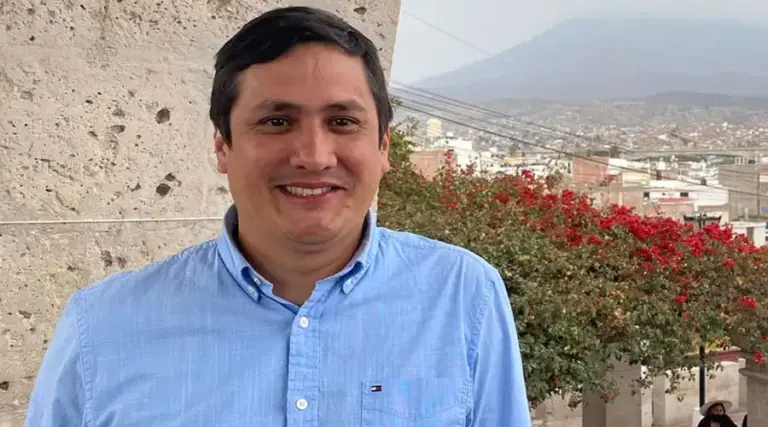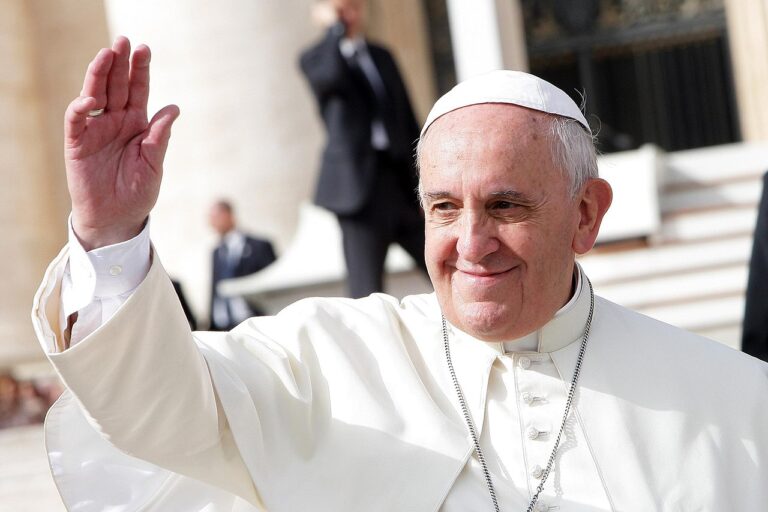Environmentalism has been one of the “prime movers” of global population control, ever since the Sierra Club published Dr. Paul R. Ehrlich’s The Population Bomb in 1969. “Sustainable development” (a term first popularized at the 1992 UN Conference on Environment and Development in Rio de Janeiro, the so-called “Earth Summit”) has become increasingly a watchword, or catchword, of population control.
The United Nations bureaucracy and its “civil society” network of non-governmental organizations fervently promote “sustainable development.” Originating on the fringe of the environmentalist movement, it now grows apace in university departments of economics, political science, and natural resources, but few really know where it began.
Daly’s Utopia
When an obscure American economist, Herman Daly, first proposed government licensing of births in the 1970s, not many took him seriously. When in 1990 he and John Cobb brought forth their book For the Common Good: Redirecting the Economy towards Community, the Environment and a Sustainable Future, the publisher was little-known Green Print in London.
But Daly became an important person at the World Bank, and at the University of Maryland. With Robert Costanza, he now guides the International Society for Ecological Economics, and in 1996 Beacon Press of Boston published his book, Beyond Growth: The Economics of Sustainable Development.
Other respectable publishers bring out an avalanche of new works on sustainable development and sustainable economies. Encouraged by official grants and international conferences (and President Clinton’s Council on Sustainable Development), the movement has grown beyond its early fringe associations. College catalogs bristle with descriptions of the new courses in sustainable economics.
The rationalizations and aims are the same as they were when Daly first began. As Daly put it, the “wild facts” of deforestation, global warming, the ozone “hole” and other environmental calamities make it imperative for humanity to change its ways. Never mind the widespread scientific disputes on all of these topics; there’s no time to lose. Don’t argue. Doom rushes toward us!
According to Daly and his many followers, in order to save the environment we must first control population. In his book For the Common Good, Daly wrote that we should require government licensing for giving birth, in strictly limited numbers, to levels consistent with a stationary, or, better yet, declining population.1 This, he argued, would be humane because people could buy and sell the licenses. In addition, the government should convert “half or more” of the land area of the United States to unsettled wilderness inhabited by wild animals.2 The government should resettle large numbers of the population in rural areas3 which of course is what Pol Pot did in Cambodia, at a cost of millions of lives.
In Daly’s Utopia, taxes on income, land use, energy, consumer purchases, gifts, inheritance, pollution and the extraction of raw materials would be designed to reduce inequality and output and consumption to “sustainable biophysical limits”4 thus lightening the weight of humanity on Nature and making us all equally poor. To lessen the chance of voters trying to back out, most elections would simply be abolished.5
Private land ownership would also be abolished.6 Strict limits on travel and trade would enforce local self-sufficiency.7 Religion would be transformed under the “influence … of ecological and feminist sensitivities”.8 Humanity would no longer seek moral guidance in “ancient religious texts that came out of a very different social and demographic situation”.9
Toward a ‘Biospheric Vision’?
But the chief obstacle to attaining an ecological Utopia, according to Daly, is not religion but economics, with its emphasis on logic based on facts. People and professional economists, he maintains, must be re-educated with a “biospheric vision”10 to recognize their “community with other living things,” in the spirit of “deep ecology,” which sees the need for a “substantial decrease in the human population” to promote “the flourishing of nonhuman life”.11 The founders of “deep ecology”, who are so greatly admired by Daly and his disciples, were equally as direct.
According to Bill Devall, George Sessions, and Arne Naess:
The flourishing of human life and cultures is compatible with a substantial decrease of the human population. The flourishing of non-human life requires such a decrease. Those who subscribe to the foregoing points have an obligation… to…implement the necessary changes.12
The influence of these proponents of the “sustainable society” has been profound. Steven C. Hackett, author of a new college textbook on sustainable economics, reverently quotes Devall, and Daly, and presents figures purporting to show that the earth has several times as many inhabitants as can be supported without “running down the natural environment.”13 Hackett (like Daly) also believes that religion and “mainstream economics” are major threats to the environment.
Agenda 21 in Action
Most economists labor in obscurity, but not Daly. His teachings live on not only in his own often-quoted writings, but in the work of his disciples, effusions from international conferences, national commissions, and in Agenda 21 of the “Earth Summit”. Agenda 21 stressed that “[t]he growth of world population and production combined with unsustainable consumption patterns places increasingly severe stress on the life-supporting capacities of our planet”.14 Spelling it out, the agreement called for governments to make “[a]n assessment .. .of national population carrying capacity…”.15 To make it clearer, “Policies should… bring about demographic transition”;16 in other words, a major reduction in birthrates.
Since “sustainable development” burst onto the world at Rio, communities throughout the world and across the United States have taken up its cause. Maurice Strong, director of the Rio Conference (now the Assistant Secretary General of the United Nations) in 1996 announced that, even though enough progress hadn’t yet been made toward achieving the objectives of Agenda 21, “More than 1500 cities and towns around the world have adopted their own Agenda 21.”17 This has occurred in cities and towns without even a mention of “Agenda 21” and with financial support coming from private foundations and from the higher levels of government. In its own drive for Agenda 21, the Clinton Council on Sustainable Development called for complete economic and social planning to rescue the environment from human beings. That council stated that not only must we “change consumption patterns”, “restructure” education, “realign social, economic and market forces”, but “population must be stabilized at a level consistent with the capacity of the earth to support its inhabitants.”18 (Whatever that capacity might be.)
The Sierra Club announced at the 1994 U.N. Conference on Population and Development in Cairo that “local activists” of the Club in the United States were working “in a consensus-based…process to establish …thresholds for…population and consumption impact on the local ecoregion.… Addressing local carrying capacities will improve the quality of life for all and help develop sustainable communities.…”19 The Club didn’t specify what action those local activists would take if it turns out that local populations exceed “carrying capacity”. But Daly, as it happens, did propose that people who have a child without a license should be “punished”. The Chinese, of course, have invented some imaginative forms of punishments for such “lawbreakers,” including imprisonment, loss of jobs and homes, the punishment of relatives, infanticide, forced abortion, and sterilization.20
Moreover, the World Bank, an avid promoter of “sustainable development” — makes economic aid to countries conditional upon promoting birth control,21 as does the U.S. Agency for International Development.22 These practices are taught as a norm in university classrooms here in the United States. Hackett, who teaches “sustainable economics” at Humboldt State University in California, often quotes Paul Ehrlich to show that mere economic development may not reduce birthrates enough to save the environment. Something more may be needed. In fact, Hackett refers to Daly’s licensing proposal and to the coercive population control efforts in China as possible solutions.23
Hackett’s belief that “mainstream economics” and religion are major enemies of “sustainable development” may be a point in favor of both religion and economics. What is abundantly clear is that population control is now being advanced under the banner of “sustainable economics”.
Jacqueline R. Kasun, Ph.D., is the author of The War Against Population (Ignatius Press, San Francisco, 1988; new edition forthcoming).
Endnotes
1 Herman Daly, “For the Common Good: Redirecting the Economy Towards Community, the Environment and a Sustainable Future”, London, Green Print, 1990. 244–246.
2 Ibid. 255.
3 ’Ibid. 264, 311.
4 Ibid. 143, 318–329.
5 ’Ibid. 177.
6 Ibid. 256–259.
7 Ibid. 229–235, 269–272.
8 Ibid. 377.
9 Ibid. 250.
10 Ibid. 376.
11 Ibid. 377.
12 Steven C. Hackett, “Environmental and Natural Resources Economics: Theory, Policy, and the Sustainable Society,” Armonk, N.Y.: M.E. Sharpe, 20, quoting B. Devall, “Simple in Means. Rich in Ends,” Salt Lake City: Peregrine Smith, 1988.
13 Hackett, 263.
14 Agenda 21, Ch. 5, par. 5.3.
15 Ibid. Ch. 5, par. 5.23.
16 Ibid. Ch. 5, par. 5.16.
17 “Environment Matters at the World Bank,” Fall 1996.
18 President’s Council on Sustainable Development, Draft Report, reprinted excerpts. eco-logic, November/December 1995.
19 Steven W. Mosher, A Mothers Ordeal: One Woman’s Fight Against China’s One-Child Policy, (New York: Harcourt Brace, 1993).
20 Sierra Club, “Population and Consumption: The Sierra Club has a Vision for Both,” distributed at the International Conference on Population and Development, Cairo, September, 1994.
21 Fred T. Sai and Lauren A. Chester, “The Role of the World Bank in Shaping Third World Population Policy,” in Godfrey Roberts (ed.), Population Policy: Contemporary Issues, (New York: Praeger, 1990.)
22 22 U.S. Code, sec. 2151–1; 22 U.S. Code, sec. 2151(b).
23 Hackett, 20, 232, 234.










